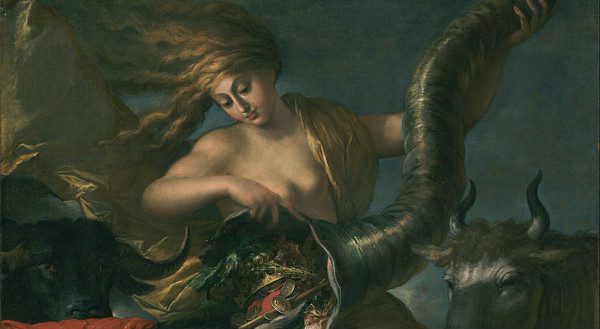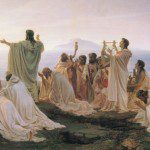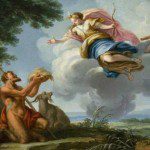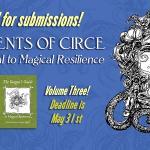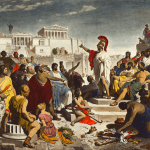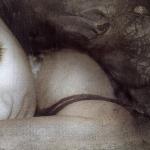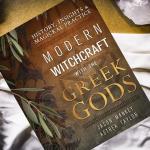There’s an article going around the Blogosphere asking what we have Pagans have accomplished over the first fifty years of our existence, with the implication that “Contemporary Paganism” started in 1967. There’s a decent argument that can be made for 1967, but there are decent arguments that can be made for a variety of dates. And as a Wiccan-Witch, 1967 as a start date feels far too late; people have been practicing Modern Witchcraft since at least 1949, and possibly a great deal earlier.
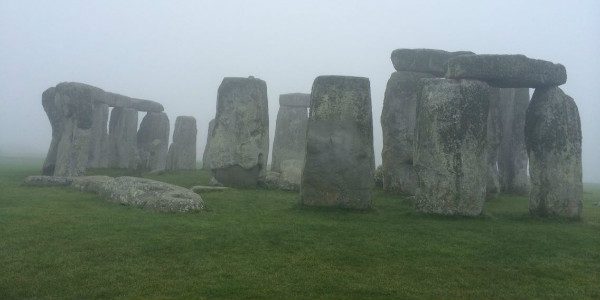
Dating something like Contemporary Paganism can be challenging because there’s no agreement on just what Modern Paganism is. For this article I’ve chosen the following criteria to constitute Modern Paganism:
1. Veneration or worship of a “pagan deity,” that is a classical deity that dates back to pagan antiquity, or was thought to do so.
2. Some sort of “nature veneration.”
3. Use of a term that implies magical use rooted in the pagan past, Druid and Witch being the two most popular examples.
Just when Paganism started is probably a question that will never truly be answered. Answers will differ because opinions of what’s “most important” and just “what is Paganism” are going to differ from individual to individual. However, I think any of the following dates are worthy of consideration. As for me, I have no doubt that what I do existed at least several decades before 1967.
1818-Poet Leigh Hunt Writes a Friend About Worshipping Pan.
In the year 1818 Leigh Hunt (1784-1859) wrote to a friend about worshipping the god Pan, and make no mistake, it definately feels as if Hunt was worshipping the goat-foot god:
“I hope you paid your devotions as usual to the Religio Loci, and hung up an evergreen. If you all go on so, there will be a hope some day that old Vansittart and others will be struck with a Panic Terror, and that a voice will be heard along the water saying ‘The great God Pan is alive again’-upon which the villagers will leave off starving, and singing profane hymns, and fall to dancing again.” (1)
Hunt was not a particularly successful poet, but he would influence such greats as John Keats and Percy Bysshe Shelley, who would also go on to write about the god Pan and in many ways help create the template for the modern “Horned God.”
1866-“Poems and Ballads First Series” by Charles Algernon Swinburne is Published.
As Ronald Hutton writes in Triumph of the Moon:
“Swinburne’s influence upon modern paganism can hardly be overestimated; he was much admired, and quoted by . . . Aleister Crowley, Dion Fortune, and Gerald Gardner.” (2)
Swinburne’s influence and legacy is the result of many things. Part of it is his sympathetic depiction of the gods of ancient paganism(s), and how he linked them to the natural world. Swinburne’s paganism is happy, life affirming, and wondrous, which contrasted sharply with his view of Christianity, which he found to be a soul-sucking killjoy. In Poems and Ballads Swinburne’s sympathy towards paganism is on full display, forever changing how people interpreted the word “pagan.”
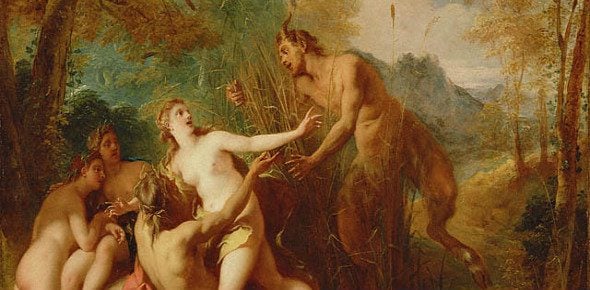
1895-The Golden Dawn & the Pagan Gods
The Golden Dawn began as a nominally Judeo-Christian organization, asking it’s members to have a belief in God before joining. And during its first incarnation it was most definitely a magickal order and not religious one, but that’s not to say that it didn’t have some strong pagan leanings. From the beginning its temples were named after pagan deities: Isis, Horus, and Amen-Ra, and by the 1890’s it was incorporating the names of pagan gods into its rituals. Were they worshipping those deities? Most members were probably not, but I’m willing to bet that at least a few saw them as very real entities. One of the Golden Dawn’s founders, Samuel Liddell MacGregor Mathers along with his wife Moina, became a worshipper of Isis and broadcast this fact proudly and loudly while living in France after the Order’s break-up.
1899-Charles Leyland & “Aradia: Or the Gospel of the Witches”
Leyland’s Aradia claims to document an Italian Witch (or Stregha) group, that existed at least up until 1899. Information about this witch-cult was given to Leyland by a confidante and informant of his named Maddalena, who claimed to be a member of the group. Aradia may be the most influential book in the development of Modern Witchcraft. It contains full moon rituals, a first draft of The Charge of the Goddess, a ceremony much like cakes and ale, and most importantly it gives us Aradia as the goddess of Witchcraft. This last part is not seen by many today as being revolutionary, but oh it was! Until Aradia most books dealing with Witchcraft put the Devil (a male god) front and center, but Aradia’s cosmology contains a female and a male god, and their daughter Aradia.
1921-“The Witch-Cult in Western Europe” & Margaret Murray
Along with Aradia, Witch-Cult is one of the most influential books in the history of Modern Witchcraft. The book is not an easy or a good read, but it offers a way in for anyone curious about the “witchcraft” of the early modern period (what many of us today called “The Burning Times”). Using actual testimony from the Witch Trials, Murray stitches together a religion that she theorizes existed for several centuries alongside Christianity, before finally being vilified as “Devil worship.” The witchcraft written about by Murray was dismissed by most academics (then and now) but that’s really inconsequential. What’s most important about Murray is that she established the idea of Witchcraft as a religion in the English speaking world, and did so in such a way that it made people want to identify as Witches after reading her work.
Murray’s follow up to Wich-Cult came out in 1931, and that book, The God of the Witches, might have been even more influential. Unlike Witch-Cult, God of the Witches was written for a popular (non-acadmeic) audience and the result is a much more readable book. Murray also fully developed her “Witch god” in the latter volume, weaving the Pan of Romantic Poetry into a very real pagan past. It was Murray who took Pan, Cernunnos, and even figures like Robin Hood and created “the Horned God” known to so many Pagans of today. Do I think people went into their backyards and quietly did rituals in honor of Murray’s Witches and their Horned God? An emphatic yes!
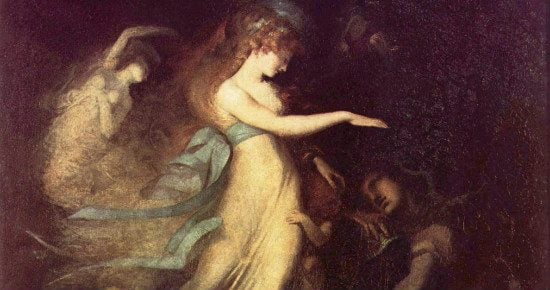
1938-Gleb Botkin & The Church of Aphrodite
Most Pagans don’t look at May 6 1938 as a monumental day, but in many ways it was. That was the date a Russian immigrant to the United States named Gleb Botkin obtained legal status for his church, The Church of Aphrodite. Botkin’s vision was different from most Paganisms today (he was a monotheist who believed Aphrodite was THE supreme deity), but he placed an ancient pagan deity at the very heart of it. His attitudes toward sex were also extremely progressive, an hallmark of many Pagan traditions today.
1938 was a banner year for goddesses, as Dion Fortune’s The Sea Priestess was also published that year. No one knows if Fortune ever truly identified as a Pagan, but she performed rituals in honor of Isis and Pan, and The Sea Priestess is practically a textbook on how to draw down a pagan goddess.
1939-And The (Alleged) Initiation of Gerald Gardner
We will never know absolutely if Gerald Gardner was initiated into a coven of Witches near New Forest England. There’s no smoking gun, and probably never will be. However, there were enough magickal people there with the right backgrounds to create something similar to today’s Wiccan-Witchcraft. I judge it more likely than not that Gardner was initiated into something, and that the people doing the initiating thought of themselves as Witches. I tend to use this date as the start of the Modern Pagan revival, and I use it because “1939” is about more than Gardner and his initiation.
By 1939 all of the elements we associate with Modern Paganism were in place. Even if Gardner’s alleged group wasn’t performing rituals, it’s likely that at least someone else was. People were most certainly invoking Pagan gods by 1939 (see above) and there were manuals (Murray, Leyland) giving at least some broad strokes detailing just how to do it.
1948-Robert Graves & “The White Goddess”
Robert Graves was not an historian, but he was an accomplished poet and novelist, and The White Goddess is his most lasting achievement. Most likely inspired by James Frazier’s The Golden Bough (1890), The White Goddess paints a romantic picture of a European Goddess-figure, that would eventually be immortalized as one being with three parts: “Maiden, Mother, and Crone.” Until Graves the concept of the “Triple Goddess” didn’t exist. Through his work he created one of the most lasting ideas of “The Goddess” in Modern Paganism. In addition he brought to life the Oak King and the Holly King, those battling brothers who turn the seasons every solstice. Much of Modern Paganism’s backbone comes directly from Graves.
1949-“High Magic’s Aid”
Even if one doesn’t buy that Gardner was initiated into something in 1939, by 1949 the Witchcraft he’d come to be associated with was more than just an idea. High Magic’s Aid was a fictional version of his Witchcraft, allegedly written after his High Priestess said “no way” to a non-fiction book on the subject. High Magic’s Aid contains terms like athame which had previously not existed on the printed page. Gardner’s best biographer, Philip Heselton, seem’s pretty confident that Gardner was doing regular Witch ritual by 1949, and the first coven that would come to be known as Gardnerian, Bricket Wood, was also in operation by this time.
1951-The Repeal of the Witchcraft Act in the United Kingdom
In 1951 the UK repealed the Witchcraft Act of 1735, a law that made it illegal to practice witchcraft, conjure spirits, practice divination, or do any of the other things that we mostly associate with Witchcraft today. The Witchcraft Act of 1735 was not a law directed at a religion or spiritual practice, but was directed at what “enlightened” men of the time thought were the action of con-men (and women). 1735’s Act was replaced in 1951 with the Fraudulent Mediums Act which “legalized” witchcraft and made it illegal to claim psychic powers and offer services for anything beyond “the entertainment” of a psychics clients. Gardner went public with his Witchcraft in 1951 shortly after the repeal of the Witchcraft Act.
Gardner’s impact on the worlds of Witchcraft and Modern Paganism cannot be over-stated. By any estimation it was Gardner who helped create (or at least publicize) the first long-lasting and widely practiced form of Modern Pagan practice. For the purposes of this article other “birth years” for Modern Paganism could include: Gardner’s publication of Witchcraft Today in 1954, and the initiation of Doreen Valiente into Witchcraft in 1953 by Gerald Gardner. Valiente’s influence on Modern Paganism is nearly as strong as Gardner’s, and ranging much further afield than the Witchcraft popularized by Uncle Gerald.
1962-Robert Cochrane Goes Looking for Witches
In 1962 Robert Cochrane and two friends put an advertisement into The Guardian (newspaper) seeking other persons interested in the ideas of Robert Graves’ The White Goddess. This is the first “public appearance” of Robert Cochrane in esoteric circles, but it wouldn’t be his last. (3) Over the next few years Cochrane would write several articles on Witchcraft, and quite a few letters detailing his practice of Witchcraft.
What makes Cochrane so important is that the traditions he started have persisted now for over 55 years now, and are even more popular today than during his own lifetime. Cochrane articulated another form of Witchcraft, different from that of Gardner, thereby establishing that “Witchcraft” (and by extension Paganism) would not be limited to just one tradition. Cochrane paved the way for other Witchcrafts, and made the Pagan world a bigger and broader place.
1964-The Founding of the Order of Bards, Ovates, and Druids by Ross Nichols
Druidry first emerged as a fraternal order in the Seventeenth Century as an alternative to Freemasonry. By the start of the 20th Century many of those fraternal Druid organizations began to incorporate ideas and concepts that today we’d identify as Pagan. It’s completely unfair to Ross Nichols to relegate his many accomplishes to the rather late date of 1964. He was most certainly practicing a spirituality many of would recognize as Pagan by the 1930’s, and by the 1940’s he was friends with Gerald Gardner (and most likely had a lot to do with the writing of Witchcraft Today).
In 1964 he founded the The Order of Bards, Ovates, and Druids after splitting with the Ancient Druid Order (who were one of the first groups to worship at Stonehenge on the Summer Solstice). OBOD isn’t strictly a Pagan organization, anyone can be a member regardless of religious affiliation, but there’s most certainly a strong undercurrent of Paganism in its beliefs and rituals. In 1963, one year before the establishment of OBOD, the Reformed Druids of North America were established at Carleton College in Minnesota. Originally created as a form of protest, the Reformed Druids would evolve into a true Pagan group.
So when did the Contemporary Pagan movement start? Hard to say, but there are several options.
NOTES
1. Merrivale, Patrician Pan the Goat-God His Myth in Modern Times, Harvest University Press 1969, page 63
2. Hutton Ronald The Triumph of the Moon, Oxford University Press 1999, page 26
3. More Hutton, page 312


